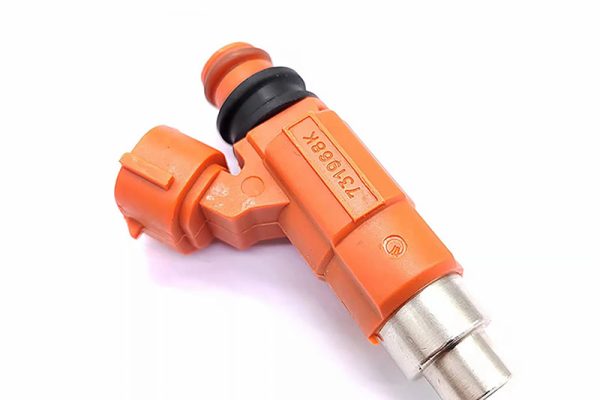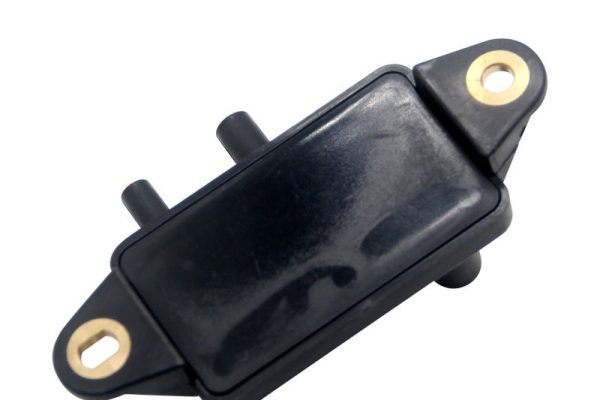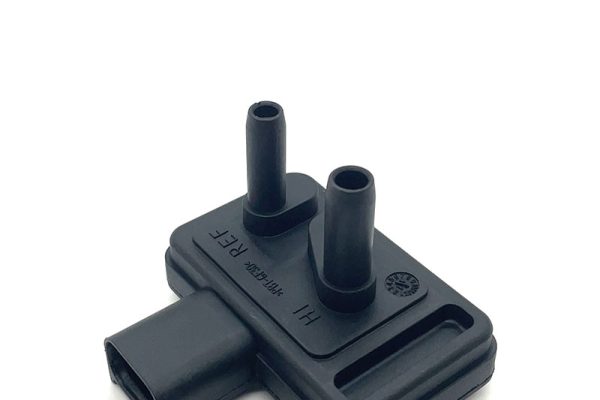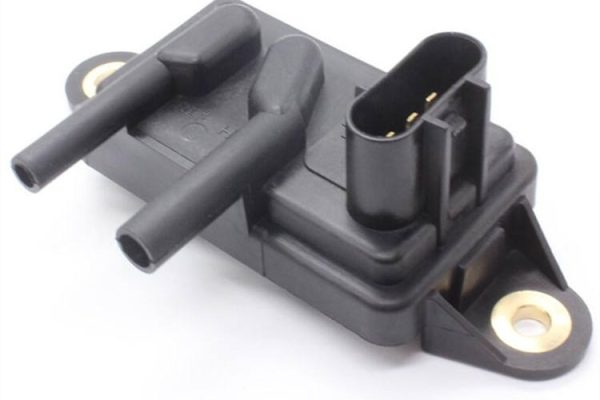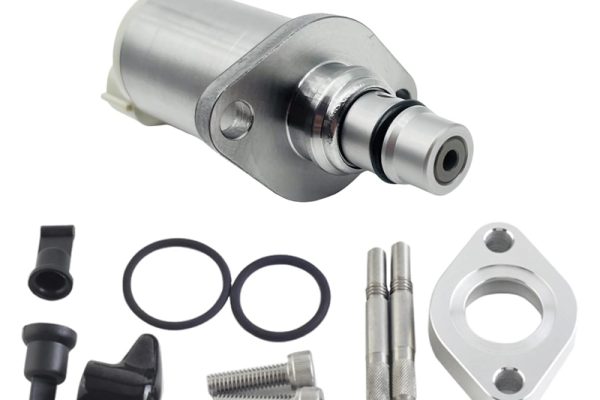Ⅰ. Introduction
In the current era where environmental protection awareness is on the rise, reducing emissions from automobiles has become an inevitable trend for the global automotive industry. The EGR pressure feedback sensor, as a key component in the automotive emission control system, is playing an increasingly important role. It is the intelligent heart of the car. It can monitor and adjust the amount of exhaust gas recirculation in real time, effectively reducing the emission of nitrogen oxides in the exhaust gas. It’s contributing to environmental protection. YZHIDIANF has always been committed to providing high-quality EGR pressure sensors and continuously developing to meet market demands. In the future, with the continuous advancement of technology, the EGR pressure feedback sensor will continue to play a greater role in the field of automobile emission reduction.
Ⅱ. The structure and working principle of the EGR pressure feedback sensor
1. The structure
The EGR pressure feedback sensor has a sophisticated structure. Its core component usually includes a pressure-sensitive element. This can precisely sense the pressure changes before and after the EGR valve. The sensor housing is made of durable and sturdy materials. This can protect the internal components from adverse environmental conditions. Additionally, the sensor is equipped with a precise circuit system. It can convert the signals collected by the pressure-sensitive element into electrical signals. Then transmits them to the engine control unit. The entire structure is compact and stable in performance, ensuring precise control of the EGR system. It’s playing an important role in the process of reducing emissions in automobiles.
2. The working principle
(1) Pressure detection
Inside the sensor, there is a highly sensitive pressure detection component. It can constantly monitor the pressure changes before and after the EGR valve. When the exhaust gas passes through the EGR valve and is recycled back into the intake system, this pressure detection component will quickly capture the pressure difference and convert it into an electrical signal. This electrical signal is then transmitted to the engine control unit as an important basis for adjusting the opening degree of the EGR valve. EGR pressure feedback sensor F7CZ9J433AH has a built-in high-sensitivity piezoelectric ceramic element. It can detect the pressure fluctuation precisely in the EGR valve in real time (range 0-50kPa), with an error rate of less than ±1.5%. Through such precise pressure detection, the EGR system can adjust the amount of exhaust gas in real time. Then effectively controlling the nitrogen oxide emissions in vehicle exhaust.
(2) Signal conversion
When the EGR pressure feedback sensor is in operation, the slight pressure difference is captured and processed by the signal conversion circuit within the sensor. The signal conversion circuit is like a sophisticated “translator”. It can convert the physical quantity of pressure changes into an electrical signal. The magnitude of this electrical signal is proportional to the pressure difference. The converted electrical signal is amplified and shaped to become more stable and accurate. And then transmitted to the engine control unit.
(3) Feedback control
The engine control unit is like a wise “commander”. After receiving this electrical signal, it will immediately conduct analysis and processing. Then adjust the opening degree of the EGR valve based on the processing results. Thus, through the real-time feedback from the sensors and the precise adjustment by the engine control unit, the EGR system can always maintain its optimal working condition. It’s beneficial to achieve a perfect balance between environmental protection and performance. “Working Principle of EGR Sensor and Its Importance in Automobile Emission Control” also shows the working principle about EGR sensors with a more concise style which you can learn easily.
Ⅲ. The pros and functions of EGR sensors
1. The functions of EGR sensors
The EGR sensor plays a crucial role in the EGR system. It can precisely control the opening degree of the EGR valve. Then regulate the amount of exhaust gas recirculation. This helps ensure that the EGR system can maintain the best working condition under different operating conditions and achieve precise emission control. Besides, the EGR sensor helps lower the temperature during the engine combustion process. Nitrogen oxides are mainly generated under high-temperature and oxygen-rich conditions. So, reducing the combustion temperature can effectively reduce the amount of nitrogen oxide formation. Additionally, it helps improve fuel economy. Because it can optimize the engine’s combustion process and enhance the fuel combustion efficiency. This helps reduce fuel consumption and improve the fuel economy of the vehicle. YZHIDIANF provides many EGR pressure feedback sensors and you can know more about their details and functions. It will help you choose what you want.
2. The pros of the EGR pressure feedback sensor
(1) Improve the performance of the engine
By precisely monitoring the pressure changes before and after the EGR valve, the sensor provides accurate data support for the engine control unit, making the control of the EGR system more precise. This helps optimize the engine’s combustion process, improve combustion efficiency, and thereby reduce the emissions of incompletely burned fuel and harmful substances. Therefore, the application of EGR pressure feedback sensors contributes to enhancing the overall performance of the engine, making it more efficient and environmentally friendly.
(2) Improve the accuracy of emission control
The EGR feedback sensor monitors the pressure changes in the exhaust gas recirculation system in real time. So, it can provide precise data to the ECU. This enables more accurate regulation of the EGR valve. This closed-loop control ensures that the exhaust gas recirculation volume always meets the engine operating conditions. Thereby significantly reducing nitrogen oxide emissions. At the same time, it avoids power loss caused by EGR flow deviation and enhancing the stability. Moreover, precise pressure feedback can reduce system misjudgment and extend the lifespan of the EGR components. This enables vehicles to balance emission control and fuel economy.
(3) Improve reliability and durability
The EGR pressure sensor monitors the system pressure changes to assist the ECU in precisely regulating the EGR valve’s operation. This helps prevent the valve from being damaged due to excessive actuation or jamming. As a result, it enhances the mechanical reliability of the EGR system. Precise pressure feedback prevents abnormal backflow of exhaust gas, which leads to carbon deposits accumulation. It also reduces the corrosion and blockage of the valve body and pipeline, and prolongs the service life of key components. By optimizing the working state of the EGR system, EGR pressure feedback sensor F77Z9J460AB has passed 100,000 pressure cycle tests. And the MTBF (mean time between failures) exceeds 80,000 hours, which is 20% longer than similar products on the market. Thereby significantly improving the durability of the system.

(4) Enhance driving experience
The EGR pressure feedback sensor precisely controls the exhaust gas recirculation volume. It can make the engine combustion more stable, effectively reducing the power lag caused by improper EGR flow. Its rapid response characteristic ensures that the EGR valve can timely adjust during acceleration, avoiding turbine lag. Meanwhile, the optimized combustion process reduces the risk of detonation. It can make the engine operation quieter and smoother. Additionally, by maintaining the optimal air-fuel ratio which helps improve the throttle response sensitivity. And allowing drivers to obtain more responsive driving experience. It’s ensuring the power continuity during long-distance driving and overall enhancing driving comfort and control confidence. “What Roles does the EGR Feedback Sensor Supplier Play?” shows that the advantages of EGR pressure feedback sensors provided by YZHIDIANF and it can improve the trust and driving confidence of customers.
Ⅳ. 4 ways to maintain the EGR pressure feedback sensor
1. Keep the sensor’s working environment in good condition
When installing the EGR pressure feedback sensor, it should be kept away from high-temperature components or vibration sources. It can prevent the aging of the components due to high temperature or signal distortion caused by vibration. Check the sealing performance of the wiring harness connectors. It can prevent water vapor and corrosive gases from invading and causing short circuits or poor contact. At the same time, use the original factory-specified cleaning agent. It can avoid damaging the sensor diaphragm with chemical solvents. Promptly repair leaks in the related systems to reduce the additional load on the sensor caused by abnormal pressure fluctuations. Thereby extending its service life and maintaining stable performance.
2. Replace the damaged parts in time
To ensure the long-term reliable operation of the EGR feedback sensor, it is necessary to replace the damaged or aged components in time. When the sensor shows signal drift, slow response or complete failure, it should be replaced promptly. It can avoid inaccurate data leading to control errors of the EGR system. At the same time, it is necessary to check and replace the damaged vacuum pipelines, aged sealing rings and corroded electrical connectors. It can prevent air leakage or poor contact from affecting signal accuracy. If the EGR valve body is stuck or leaks, it should also be repaired together. It can avoid accelerating sensor wear due to abnormal working conditions. Use original factory or equivalent quality replacement parts, and recalibrate the system. It’s good to ensure that the pressure feedback matches the ECU and restore the best emission control performance.
3. Regular checking
It is recommended to use a diagnostic instrument to read the sensor data stream every 20,000 kilometers or as per the maintenance manual requirements, to verify whether the signal fluctuates within the standard range. Visual inspection should be conducted to check if there is any oil contamination deposition on the sensor body, cracks on the housing or oxidation phenomena on the connector. At the same time, the sealing performance of the associated vacuum pipeline should be tested to check for any leakage or blockage. For high mileage vehicles, it is recommended to shorten the inspection cycle and simultaneously test the sensor performance each time the EGR valve is replaced. “A Comprehensive Maintenance Guide for EGR Sensors” shows more means to check the sensor’s malfunctions and you can learn more from it. Through preventive maintenance, sudden failures that affect engine operation can be avoided.
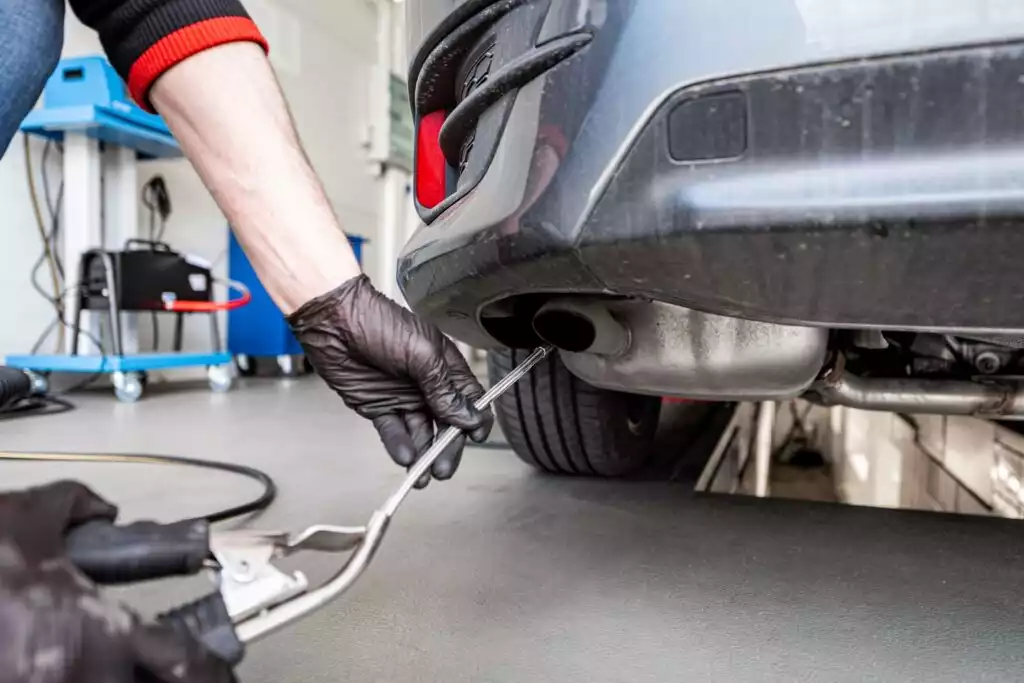
4. Regular cleaning
Regular cleaning is a key maintenance measure for keeping the EGR pressure feedback sensor functioning properly. Use a dedicated sensor cleaner to remove carbon deposits and oil stains on the probe surface. During operation, disconnect the power supply first, use a soft-bristled brush in combination with compressed air to remove peripheral impurities, then use an acid-free cleaning agent to dissolve stubborn carbon deposits to avoid damaging the sensitive element with hard objects. Focus on cleaning the pressure sampling hole and the sensing diaphragm area to ensure the air flow channel is unobstructed. After cleaning, wait for complete drying before reinstallation and perform ECU calibration. For vehicles used in dusty environments, the cleaning frequency should be appropriately increased to prevent particle accumulation from causing measurement distortion or response delay.
Ⅴ. The 3 major directions of future intelligence development
1. Adaptive learning and self-diagnosis functions
Adaptive learning and self-diagnosis capabilities have become important trends. The sensor can automatically learn and adjust its working parameters according to the actual operating conditions and usage environment of the engine to meet the emission control requirements under different conditions. At the same time, it also has self-diagnosis function, which can monitor its own working status in real time. Once a fault or abnormality is detected, it will immediately send an alarm to the engine control unit, facilitating the timely detection and handling. For example, the EGR pressure feedback sensor DPFE15 can detect abnormalities in the sensor’s internal circuit in real time, and trigger the warning light through the ECU to remind the user to avoid the risk of engine lock caused by sensor failure. This intelligent design enhances the reliability and maintenance efficiency of the EGR system, bringing more possibilities to vehicle emission control.
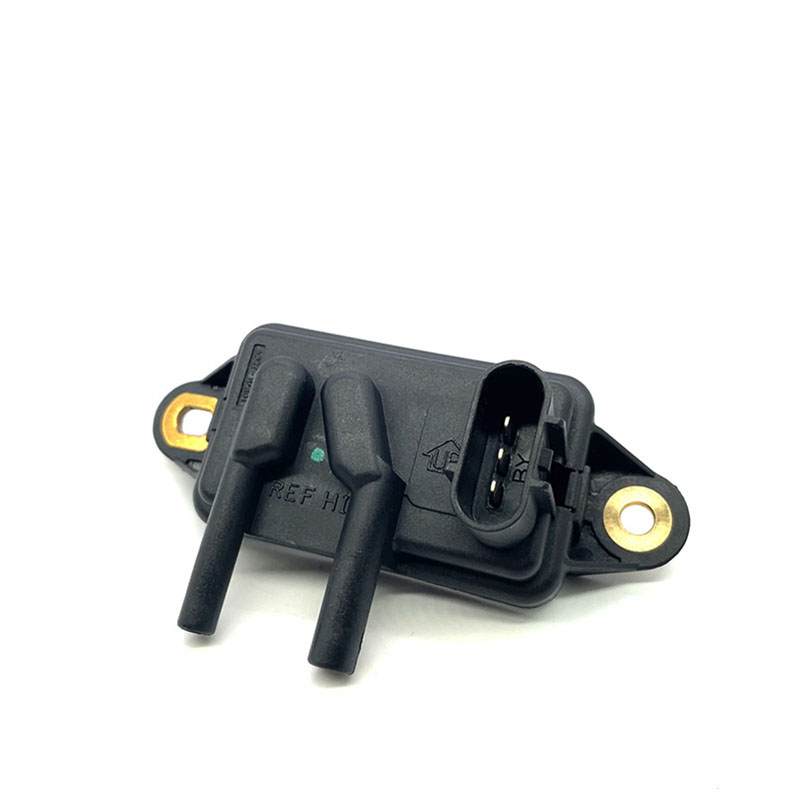
2. Remote monitoring and data sharing
The EGR feedback sensor is moving towards a new era of intelligence, with remote detection and data sharing becoming its key development directions. By integrating advanced communication technologies, the sensor can achieve remote real-time monitoring and transmit accurate pressure data without the need for manual intervention. At the same time, these data can be shared with other systems of the vehicle or cloud platforms, providing comprehensive support for vehicle management, performance optimization, and fault diagnosis. This intelligent feature not only enhances the maintenance efficiency of the EGR system but also opens new paths for the digital transformation and intelligent management of the automotive industry.
3. The application of new materials and new technologies
The EGR pressure feedback sensor is constantly exploring the application of new materials and new technologies in the direction of intelligence. The use of new materials, such as ceramics or alloy materials with higher thermal stability, has enhanced the durability and accuracy of the sensor. At the same time, advanced sensor technologies, such as micro-nano processing technology and intelligent algorithms, enable the sensor to perceive pressure changes more accurately and possess stronger anti-interference capabilities. “Technical Breakthrough of EGR Pressure Sensors” also introduced this aspect and provides more details about the technical development. The application of these new materials and new technologies not only improves the performance of the EGR system but also provides strong support for the intelligent, miniaturization and integration development of the sensor.
Ⅵ. Conclusion
The EGR pressure feedback sensor, as the intelligent core of the automotive emission control system, has demonstrated unprecedented professional performance by intelligent development. It not only achieves high-precision and real-time monitoring of the pressure changes in the EGR system, but also optimizes the emission control strategy, thereby significantly reducing the emission of harmful substances in the vehicle exhaust. Looking forward to the future, the EGR sensor will continue to lead the intelligent development of automotive emission control, providing solid technical support for building a low-carbon, environmentally friendly, and efficient automotive power system, and helping the automotive industry enter a new stage of green and sustainable development.



